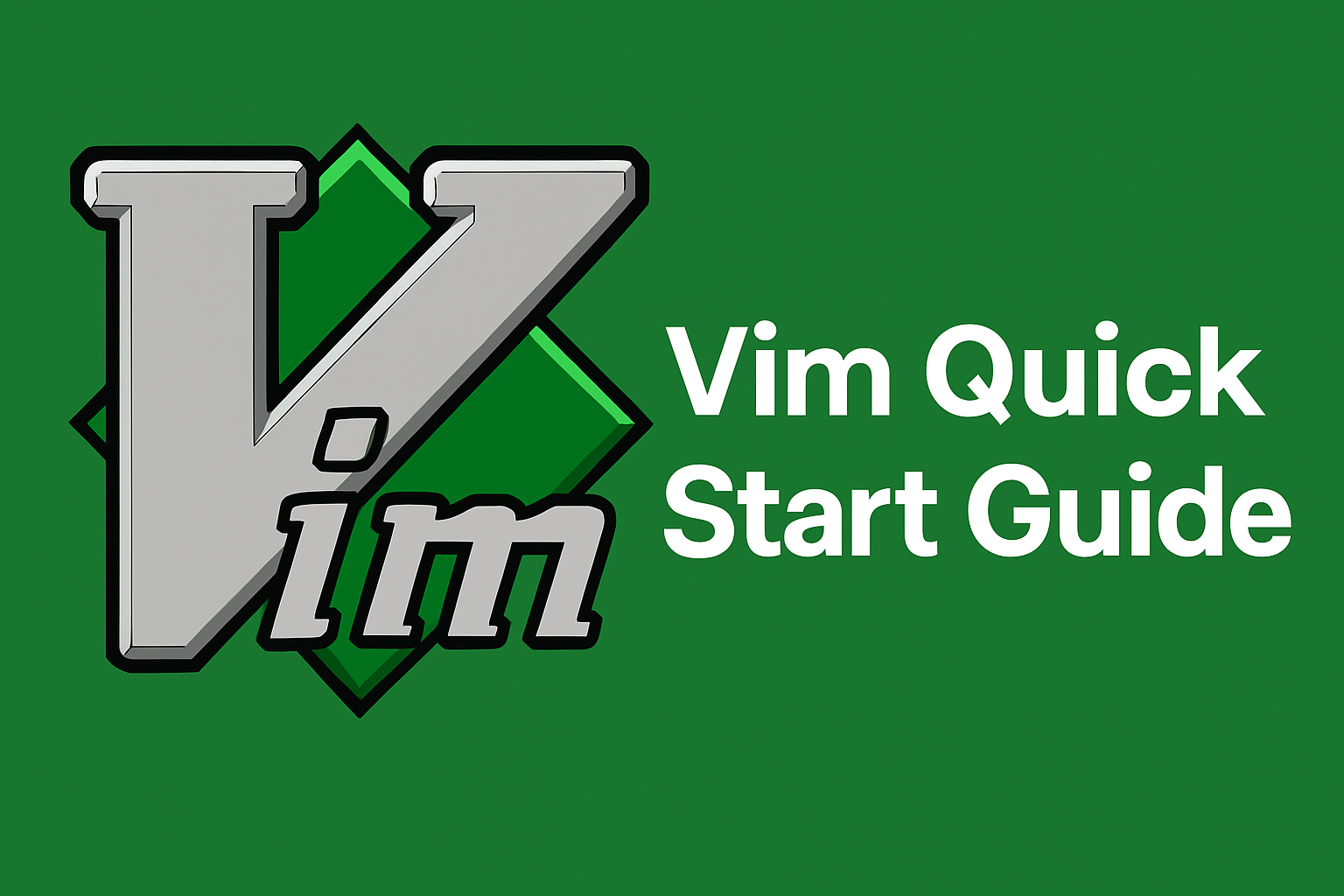Vim Quick Start Guide

Contents
✍️ Quick Guide to vim
vim is a powerful, keyboard-driven text editor found on almost every Unix-like system. It’s fast, lightweight, and essential for sysadmins and developers.
🧭 Understanding Vim Modes
Vim has 3 primary modes:
| Mode | Description |
|---|---|
| Normal | Navigation and commands |
| Insert | Typing/editing text |
| Visual | Selecting text |
You start in Normal mode by default.
📂 Opening a File
|
|
This opens the file in Normal mode.
✍️ Entering Insert Mode
| Key | Description |
|---|---|
i |
Insert before cursor |
a |
Append after cursor |
o |
Open new line below |
💡 Tip: You’ll see -- INSERT -- at the bottom of the screen when in Insert mode.
⎋ Returning to Normal Mode
- Press
Escto exit Insert or Visual mode and return to Normal mode.
💾 Saving and Quitting
| Command | Description |
|---|---|
:w |
Save (write) |
:q |
Quit |
:wq / ZZ |
Save and quit |
:q! |
Quit without saving |
Tip for Beginners
To exit Vim quickly, press
Esc, then type :q! and hit Enter.🔁 Navigation Shortcuts (Normal Mode)
| Key | Action |
|---|---|
h, j, k, l |
Move left, down, up, right |
gg |
Go to top of file |
G |
Go to end of file |
0 / ^ / $ |
Start / first char / end of line |
w, b |
Next / previous word |
Ctrl+d/u |
Scroll half page down/up |
📌 Editing Text (Normal Mode)
| Key | Action |
|---|---|
dd |
Delete (cut) current line |
yy |
Copy current line |
p |
Paste after cursor |
u / Ctrl+r |
Undo / redo |
x |
Delete character under cursor |
r<char> |
Replace character |
🔧 Useful Vim Settings (.vimrc)
|
|
📚 Resources
- Run
vimtutorin terminal for an interactive tutorial. - Official site: https://www.vim.org
- Cheatsheet: https://vim.rtorr.com
 IT Blog
IT Blog